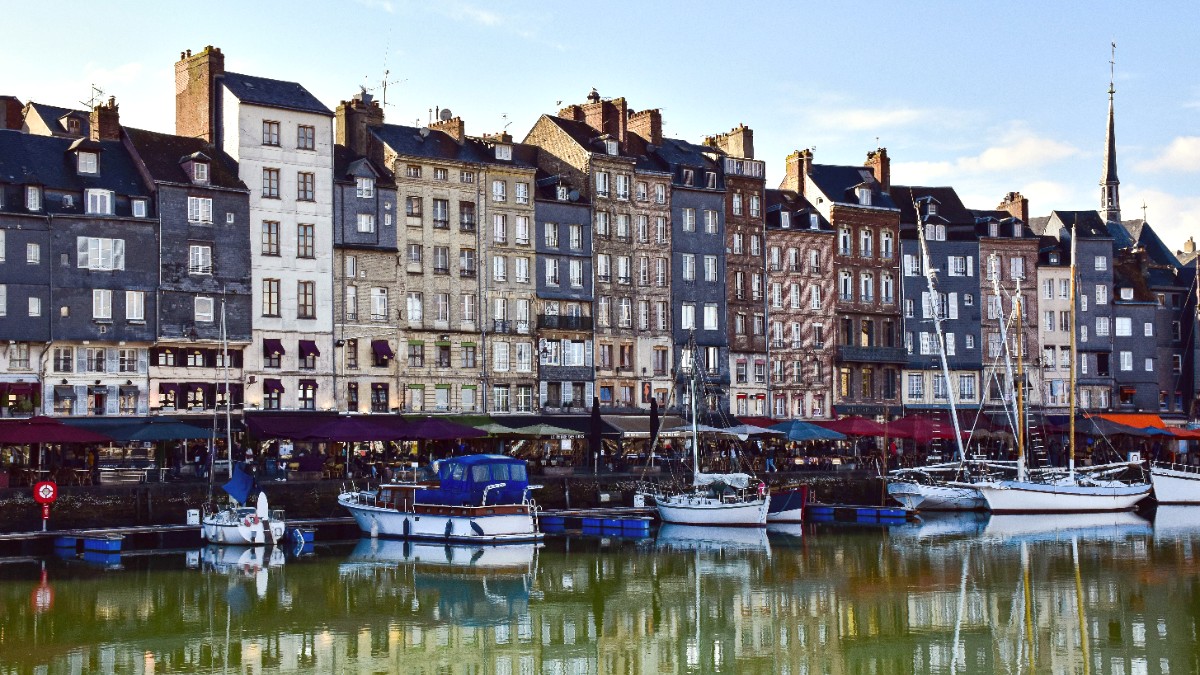
France
Norman cuisine has a long past, shaped by the region’s fertile land, plentiful dairy production, and coastal access. The use of butter and cream is prominent, reflecting the quality of Norman dairy.
Apples, grown widely in the Pays d'Auge orchards, constitute another defining element, finding use in beverages like cider and Calvados, and many desserts.
Lunch (le déjeuner) is typically from 12:00 PM to 2:00 PM. Dinner (le dîner) generally begins around 7:00 PM. Many restaurants close between these services.
Reservations are recommended for popular restaurants, especially for dinner, weekends, or peak season. Wait to be seated by a staff member upon entering.
Bread is usually served with meals, meant to accompany food. "Service compris" means the service charge is included; a small additional gratuity for good service is common but not obligatory.
Fresh mussels steamed in white wine, butter, and herbs. Often served with a generous portion of French fries (moules frites).
Found widely in Honfleur's many seafood restaurants around the Vieux Bassin.
Fresh scallops, frequently pan-seared with butter and cream, or baked as a gratin. A seasonal specialty, typically harvested from October to May.
Search for this dish in upscale and mid-range restaurants during season.
A classic French upside-down apple tart, featuring caramelized apples under a pastry crust. A delightful dessert.
Enjoy this dessert in most bakeries (boulangeries) and as a dessert option in restaurants.
Caramel made with rich Isigny cream, available as candies or spreads. Teurgoule is a traditional Norman rice pudding, slowly baked until caramelized on top.
During scallop season (autumn to spring), many restaurants feature special scallop dishes. Apple-related foods and drinks are prominent in autumn, coinciding with the harvest.
For a special occasion, Honfleur includes high-end restaurants focusing on refined cuisine.
Honfleur has many bistros and brasseries delivering a balance of quality and value.
Affordable and satisfying options for quick meals and snacks.
Held on Place Sainte Catherine and surrounding streets. This is Honfleur’s main market. It features a wide array of fresh produce, artisan cheeses, local meats, fresh seafood, and regional specialties. It proves ideal for self-catering or gathering picnic supplies.
A must-visit for local flavors and atmosphere.
A smaller organic market occurs on Wednesdays, providing fresh, organic produce directly from local farmers, supporting sustainable agriculture.
A good source for fresh, local organic goods.
A few pizzerias offer familiar comforts.
Limited Asian restaurants exist.
French and Norman cuisine dominates.
Le Havre or Caen provide more international variety.
Awareness of gluten-free (sans gluten) and other allergens is growing. In Honfleur, clearly communicate your dietary needs to restaurant staff.
Using basic French phrases supports conveying requirements precisely.
Carry a small card with your dietary restrictions translated into French. Apps like "HappyCow" can assist in locating vegetarian/vegan options, though coverage may be limited in smaller towns.
Always double-check upon arrival.
For strict dietary needs, consider self-catering options. Honfleur's markets and supermarkets stock a variety of fresh produce, making meal preparation at your rental practical.
Utilize online translation tools or phrasebooks to express your needs clearly and accurately. Photos of problematic ingredients can also aid communication.
Dedicated public cooking classes specifically in Honfleur are limited. Some luxury hotels might provide private classes for guests. Inquire locally if interested in an artistic or culinary workshop.
Located in the nearby Pays d'Auge region, this scenic route winds through numerous orchards and distilleries. You can visit farms, learn about the production processes, and sample/buy products directly.
Visits to cheese producers (e.g., Camembert, Pont-l'Évêque) are possible in the wider Normandy region, providing a chance to see how these famous cheeses are made.
The region's fertile soil and coastal access have shaped its rich culinary history, with recipes passed down through generations.
A deep connection to the land and sea.
Many local producers maintain traditional methods for crafting cider, Calvados, and cheeses, preserving authentic tastes.
Taste the tradition in every bite and sip.
Many smaller establishments close between lunch and dinner, especially outside peak season. Confirm hours before visiting.
A few polite phrases in French go a long way and are well-received by local staff.
Many restaurants list their menus online, allowing you to preview options and prices before arrival.
Exploring Honfleur's dining scene means embracing its local specialties. Fresh seafood is a staple. Don't hesitate to try a fixed-price menu for a complete culinary experience.